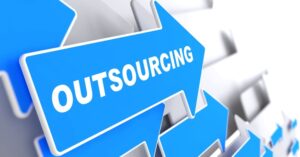Efficient revenue cycle management (RCM) is the backbone of a thriving healthcare practice. Among its many metrics, accounts receivable (A/R) days is a critical indicator of financial health. For independent providers and healthcare organizations alike, high A/R days often signal inefficiencies that can lead to cash flow challenges, operational disruptions, and even jeopardized patient care.
In this blog, we will break down what A/R days mean, why they matter, and provide actionable strategies to reduce them while improving cash flow. By implementing these proven techniques, you can ensure the financial stability and growth of your practice in 2025 and beyond.
What Are A/R Days and Why Do They Matter?
Accounts Receivable (A/R) Days is a metric that measures the average number of days it takes for a healthcare practice to collect payments owed by patients and payers. It is calculated using the formula:
A/R Days = (Total Accounts Receivable / Average Daily Charges)
Lower A/R days indicate efficient billing and collections processes, while higher A/R days suggest delays in reimbursements and possible cash flow issues.
Why A/R Days Matter
- Cash Flow Impact: Delayed payments hinder the ability to pay operational expenses like salaries, utilities, and supplies.
- Patient Experience: Inefficient billing processes can lead to patient frustration, especially if they face unexpected bills or collection notices.
- Practice Growth: High A/R days limit your ability to invest in new technology, staff, or expanded services.
Key Factors Contributing to High A/R Days
1. Inefficient Claim Submission
Errors in claims, such as incorrect patient information or coding mistakes, result in denials or delays.
2. Poor Denial Management
Without a robust denial management strategy, rejected claims can languish, extending the time to resolution.
3. Inadequate Patient Collections
Failure to collect copays, deductibles, or balances at the time of service adds to the A/R backlog.
4. Lack of Real-Time Eligibility Verification
Unverified insurance details often lead to claim rejections and delayed reimbursements.
5. Insufficient Follow-Up
Failure to proactively follow up with payers on pending claims significantly increases A/R days.
Strategies to Reduce A/R Days and Boost Cash Flow
1. Streamline Claim Submission Processes
- Automate Claims Scrubbing: Utilize RCM software to check claims for errors before submission. This reduces denials and speeds up the reimbursement process.
- Adopt Standardized Workflows: Ensure your billing team follows a consistent protocol for claim submissions to minimize delays.
2. Implement Robust Denial Management
- Track and Analyze Denials: Identify common reasons for claim rejections and address root causes. For example, if coding errors are frequent, invest in additional training for your staff.
- Create a Denial Workflow: Establish a structured process for appealing denied claims, including timelines for follow-up.
3. Enhance Patient Payment Collections
- Offer Flexible Payment Options: Provide patients with multiple ways to pay, such as online portals, mobile apps, or payment plans.
- Collect at the Point of Service: Train front-desk staff to collect copays and outstanding balances during patient check-ins.
4. Conduct Real-Time Eligibility Verification
- Verify Insurance Details: Confirm coverage and benefits before the appointment to prevent claim denials due to ineligibility.
- Use Integrated Tools: Leverage RCM platforms that offer real-time insurance verification to ensure accuracy.
5. Leverage Technology for A/R Management
- Automated Follow-Up: Use software to send reminders for outstanding claims to both patients and payers.
- Customizable Dashboards: Implement RCM solutions with real-time reporting capabilities to monitor A/R trends and performance.
6. Partner with an RCM Expert
Collaborate with a specialized RCM service provider like AllegianceRCM to handle billing complexities, optimize processes, and focus on your practice’s financial health.
Proven Techniques for Sustaining Lower A/R Days
1. Set Performance Benchmarks
Establish key performance indicators (KPIs) for your billing team, such as first-pass acceptance rates, average days to pay, and denial resolution times.
2. Invest in Staff Training
Ensure your team is well-versed in the latest coding standards (e.g., ICD-10, CPT) and payer requirements.
3. Conduct Regular A/R Audits
Periodically review your A/R reports to identify bottlenecks, track aging claims, and prioritize collections.
4. Maintain Open Communication with Payers
Develop strong relationships with insurance representatives to expedite claim resolutions and address issues promptly.
5. Keep Patients Informed
Transparent communication about billing policies, payment expectations, and outstanding balances improves patient satisfaction and reduces disputes.
Real-World Results: Case Studies
Case Study 1: Reducing A/R Days by 25%
A multi-specialty practice with an average of 45 A/R days partnered with AllegianceRCM to revamp its processes. By implementing automated claim scrubbing and proactive denial management, the practice reduced its A/R days to 34 within six months, significantly improving cash flow.
Case Study 2: Boosting Collections by 30%
An urgent care center struggling with patient collections utilized AllegianceRCM’s point-of-service payment tools. By training front-desk staff and offering flexible payment plans, the center increased its collections by 30% in under a year.
The Role of Transparent Reporting in A/R Management
Transparent reporting is essential for reducing A/R days. Real-time dashboards and detailed financial reports provide actionable insights that help you:
- Identify aging claims that need immediate attention.
- Monitor payer performance and address recurring issues.
- Forecast cash flow for better financial planning.
Future Trends in A/R Management
As healthcare technology evolves, the following trends will play a significant role in A/R management:
- Artificial Intelligence (AI): AI-powered tools can predict claim denials, automate follow-ups, and enhance decision-making.
- Patient-Centric Billing: Simplified billing statements and transparent pricing will improve patient collections.
- Blockchain Technology: Secure, decentralized systems will streamline payer-provider transactions and reduce delays.
Conclusion
Reducing A/R days and improving cash flow are critical for the financial stability and growth of any healthcare practice. By streamlining processes, leveraging technology, and fostering transparency, independent providers can overcome billing challenges and unlock their practice’s full potential.
At AllegianceRCM, we specialize in helping healthcare providers optimize their revenue cycles through tailored strategies and cutting-edge technology. Let us help you achieve financial success while you focus on delivering exceptional patient care.
Ready to transform your A/R management? Contact us today!





